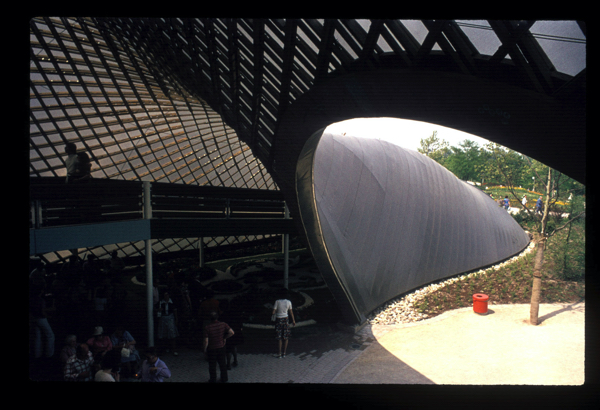
Dir.: Christian Haardt; Documentary; Germany 2019, 77 min.
This portrait of German Art Historian, Architectural Theorist and publicist Professor Heinrich Klotz (1935-1999) is a collage of archive material from German TV and Radio programmes, as well as Super Eight images shot by Klotz. After lecturing at the University of Marburg, Klotz founded the German Architectural Museum in Frankfurt/M in 1979. Eleven years later he founded and became the first director of the Centre for Art and Media Technology in Karlsruhe, a position he gave up a year before his death to found the Museum for Contemporary Art in Karlsruhe, which is a Museum for Collections.
As it befits an academic, the documentary is told in chapters, bookended by a sort of preface/epilogue by Klotz. Here he calls himself a member of the “white” generations of Germans, who had seen war as children, and were exempted from military service because they had life experience of war and were therefore inadequately equipped to deal with it a second time around. Klotz’s sole tribute is to his wife.
His approach to life is pragmatic and functional – even though he would later criticise Modernism for having erected functionality as a dogma. In chapter one, A New Environment, he discusses urban regeneration, particularly with reference to Frankfurt/M that only began in the middle of the 20th century. In the immediate post-war period (1945-1955) functionality was primarily a practical consideration: people needed to be re-housed after wartime destruction. By the same token, he bemoans the three decades where apartment blocks were merely “white boxes”. There are images of Frankfurt’s old town, and his own house which he renovated to save a Renaissance ceiling, after moving to the city from the countryside.
In chapter two, Functionalism, he criticises the concept of the “Märkisches Viertel” in West Berlin, a “Trabantenstadt”, which was erected in the countryside after the old city had been declared obsolete by the planners. But, like the modern buildings at Kottbusser Tor in Berlin, the “Märkisches Viertel” was inhuman: instead of “buildings of the future”, these projects were like consumer goods: empty and devoid of style. Klotz reminds us that the Bauhaus architecture of the 1920s and 30s was built on the premise of a “classical Modernity”, and that Buildings like the Neue Gedenkbibliothek or the Philharmony in West Berlin were erected in a democratic tradition, unlike “Container Cities” such as the “Märkisches Viertel”.
Chapter three sees Klotz visiting Disneyland in “Post Modernism and Kitsch”. He calls it an artificial paradise built against the impact of the new grey cities. But at the same time, the permanent music (muzag), drives him mad. He feels he can only be passive, no interaction is possible. Chapter four, Interactivity, bears witness to the first interactive TV Art in the Centre for Art and Media, Karlsruhe. The visitors could watch themselves moving on the sofa on the TV next to them. Jeffrey Shaw’s “bicycle ride through NY, features simulations, illusion. When “cycling” through the city, the visitor is confronted by huge letters, explaining what he would see, rather than actual buildings and parks. He has no desire to visit old-fashioned museums where the experience is passive, instead he looks for Playfulness. Then he goes a step further, discussing Adorno, quoting “After Auschwitz it is not possible any more to write a poem”. But Klotz himself hopes for a new Utopia, unlike Modernism which created a dogma, but in a democratic way.
Although this is a rather arcane and esoteric documentary, it certainly confirms Klotz as an original thinker, something rather unusual in post-war Germany. First time director Christian Haardt, who was a student and associate of Klotz, does his best to celebrate his mentor. AS